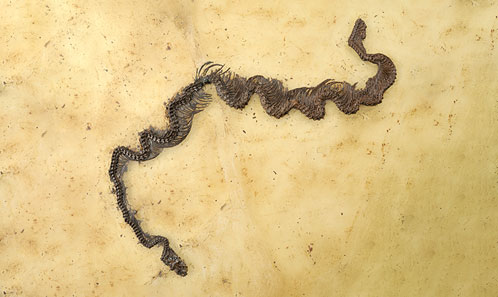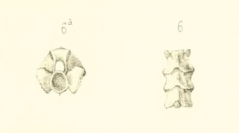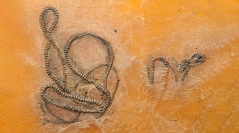Comptes Rendus Palevol
This page lists the articles of the journal Comptes Rendus Palevol ; you can filter the content (multiple choices) using the form below.
Snakes from the Cenozoic of Europe – towards a macroevolutionary and palaeobiogeographic synthesis
Edited by Georgios L. GEORGALIS, Hussam ZAHER & Michel LAURINSnake remains are abundant in the Cenozoic European fossil record and are known from an array of localities throughout the continent. Snake fossils mainly consist of isolated vertebrae and, to a lesser degree, incomplete cranial remains; however, in a few cases, complete articulated skeletons and even mummified trunk portions of the body have also been discovered. Their fossil record in Europe attests to a high taxonomic diversity during their Cenozoic past, comprising several dozens of named species and pertaining to a plethora of distinct shapes and sizes. The European Cenozoic fossil record of snakes, which dates back to the Paleocene and encompasses a wide geographic distribution, provides valuable insights into major climatic events, dispersals, faunal turnovers, and extinctions that shaped the European Cenozoic faunas, ultimately leading to the emergence of many extant taxa. Despite more than two centuries of paleontological effort on Cenozoic European snakes and recent advances in our knowledge of the cranial and vertebral morphology of extant snakes, significant gaps remain, as many taxa have yet to be adequately described and the phylogenetic relationships of several taxa are still poorly known, thus hindering a full understanding of snake evolution in the European Cenozoic. The articles in this virtual issue aim to fill certain of these gaps in our knowledge, as they include, among others, descriptions of new snake taxa, re-documentation of type specimens described more than a century ago, identifications of novel anatomical features in the skull and vertebrae, studies of articulated skeletons from Fossillagerstätte localities enhanced by the application of micro-computed tomography (μCT) scanning, documentation of new fossil snake occurrences from underexplored regions of Europe, and studies of palaeobiogeography, dispersal and extinction events.

2025
 European origins of Squamata supported by biogeographic analysis of fossil-tip-dated phylogenies using paleocontinental plate-tectonic models
European origins of Squamata supported by biogeographic analysis of fossil-tip-dated phylogenies using paleocontinental plate-tectonic models
Ian V. WILENZIK & Robert Alexander PYRON
139-158, Published on 26 March 2025, art. 24 (9)

This article is a part of the thematic issue Snakes from the Cenozoic of Europe – towards a macroevolutionary and palaeobiogeographic synthesis edited by Georgios L. GEORGALIS et al.
 The first snake from the lower Eocene (MP 10-11) of the Cos locality, Phosphorites du Quercy, France
The first snake from the lower Eocene (MP 10-11) of the Cos locality, Phosphorites du Quercy, France
Andrej ČERŇANSKÝ et al.
61-66, Published on 26 February 2025, art. 24 (5)

This article is a part of the thematic issue Snakes from the Cenozoic of Europe – towards a macroevolutionary and palaeobiogeographic synthesis edited by Georgios L. GEORGALIS et al.
 Revision of the enigmatic snake Plesiotortrix edwardsi Rochebrune, 1884 from the Phosphorites du Quercy, France
Revision of the enigmatic snake Plesiotortrix edwardsi Rochebrune, 1884 from the Phosphorites du Quercy, France
51-59, Published on 21 February 2025, art. 24 (4) 

This article is a part of the thematic issue Snakes from the Cenozoic of Europe – towards a macroevolutionary and palaeobiogeographic synthesis edited by Georgios L. GEORGALIS et al.
 Introduction to: Snakes from the Cenozoic of Europe – towards a macroevolutionary and palaeobiogeographic synthesis
Introduction to: Snakes from the Cenozoic of Europe – towards a macroevolutionary and palaeobiogeographic synthesis
Georgios L. GEORGALIS et al.
45-49, Published on 19 February 2025, art. 24 (3)

This article is a part of the thematic issue Snakes from the Cenozoic of Europe – towards a macroevolutionary and palaeobiogeographic synthesis edited by Georgios L. GEORGALIS et al.







